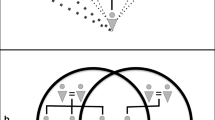Abstract
We investigate the lifetime incidence and duration oflone motherhood and stepfamilies in Great Britainusing both retrospective and panel informationcontained in the British Household Panel Survey,1991–1995. We find that about 40 per cent of motherswill spend some time as a lone-parent. The duration oflone parenthood is often short, one-half remaininglone-mothers for 4.6 years or less. Aboutthree-fourths of these lone-mothers will form astepfamily, with 80 per cent of these stepfamiliesbeing started by cohabitation and 85 percent followingthe dissolution of a union. Stepfamilies are not verystable: over one-quarter dissolve within one year.Thus, an increasing proportion of today's youngchildren in Britain are likely to experience thechanges, tensions and strains which life inlone-parent families and stepfamilies often entails.The increasing complexity of inter-householdrelationships between children and parents hasimportant implications for the relevance oftheoretical views of the operation of the family putforward by social researchers.
Similar content being viewed by others
References
Bumpass, L. L. and Raley, R. K., 1995. 'Redefining single parent families: Cohabitation and changing family reality', Demography 32: 97–109.
Bumpass, L. L., Raley, R. K. and Sweet, J. A., 1995. 'The changing character of stepfamilies: Implications of cohabitation and nonmarital childbearing', Demography 32: 425–436.
Del Boca, D. and Flinn, C., 1995. 'Rationalizing child-support decisions', American Economic Review 85: 1241–1262.
Ermisch, J. F., 1997. 'Pre-marital cohabitation, childbearing and the creation of one-parent families', in I. Persson and C. Jonung (eds), Economics of the Family and Family Policies. Routledge, London, 119–135.
Ermisch, J. F. and Francesconi, M., 1996. 'Partnership formation and dissolution in Great Britain', Institute for Social and Economic Research Working Paper No. 96-10. University of Essex.
Ermisch, J. F. and Francesconi, M., 1999. 'Family structure and children's achievements', Institute for Social and Economic Research. University of Essex, mimeo.
Ermisch, J. F. and Francesconi, M., 2000. 'Cohabitation in Great Britain: Not for long, but here to stay', Journal of the Royal Statistical Society, Series A, forthcoming.
Ermisch, J. F. and Wright, R. E., 1991. 'The duration of lone parenthood in Great Britain', European Journal of Population 7: 129–158.
Haskey, J., 1990. 'Children in families broken by divorce', Population Trends 61: 34–42.
Haskey, J., 1994. 'Stepfamilies and stepchildren in Great Britain', Population Trends 76: 17–28.
Haskey, J., 1995. 'Trends in marriage and cohabitation: The decline in marriage and changing pattern of living in partnerships', Population Trends 80: 5–15.
Haskey, J., 1996. 'The proportion of married couples who divorce: Past patterns and current prospects', Population Trends 83: 25–36.
Haskey, J., 1999. 'Having a birth outside marriage: The proportions of lone mothers and cohabiting mothers who subsequently marry', Population Trends 97: 6–18.
Jarvis, S. and Jenkins, S. P., 1999. 'Marital splits and income changes: Evidence from the British Household Panel Survey', Population Studies 53: 237–254.
Kiernan, K., 1999a. 'Cohabitation in Western Europe', Population Trends (Summer) 96: 25–32.
Kiernan, K., 1999b. 'Childbearing outside marriage in Western Europe', Population Trends (Winter) 98: 11–20.
Kiernan, K. and Mueller, G., 1998. 'Who are the divorced and who divorces', Centre for Analysis of Social Exclusion, CASE Paper No. 7, London School of Economics.
McLanahan, S. and Bumpass, L. L., 1988. 'Intergenerational consequences of family disruption', American Journal of Sociology 94: 130–152.
McLanahan, S. and Sandefur, G., 1994. Growing Up with a Single Parent: What Hurts, What Helps. Harvard University Press, Cambridge, MA.
Moffitt, R. A. and Rendall, M. S., 1995. 'Cohort trends in the lifetime distribution of female headship in the United States', Demography 32: 407–424.
OECD, 1990. Lone Parents: The Economic Challenge. Organisation for Economic Cooperation and Development (OECD), Paris.
Rosenzweig, M. R. and Wolpin, K. I., 1993. 'Intergenerational support and the life cycle incomes of young men and their parents: Human capital investments, coresidence, and intergenerational transfers', Journal of Labor Economics 11: 84–112.
Rosenzweig, M. R. and Wolpin, K. I., 1994. 'Parental and public transfers to young women and their children', American Economic Review 84: 1195–1212.
Wallerstein, J. and Blakeslee, S., 1989. Second Chances: Women, Men, and Children a Decade After Divorce. Ticknor and Fields, New York.
Weiss, Y. and Willis, R. J., 1985. 'Children as collective goods and divorce settlements', Journal of Labor Economics 19: 268–292.
Author information
Authors and Affiliations
Rights and permissions
About this article
Cite this article
Ermisch, J., Francesconi, M. The Increasing Complexity of Family Relationships: Lifetime Experience of Lone Motherhood and Stepfamilies in Great Britain. European Journal of Population 16, 235–249 (2000). https://doi.org/10.1023/A:1026589722060
Issue Date:
DOI: https://doi.org/10.1023/A:1026589722060




